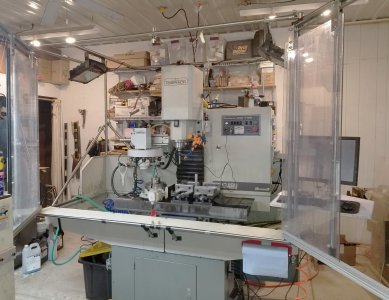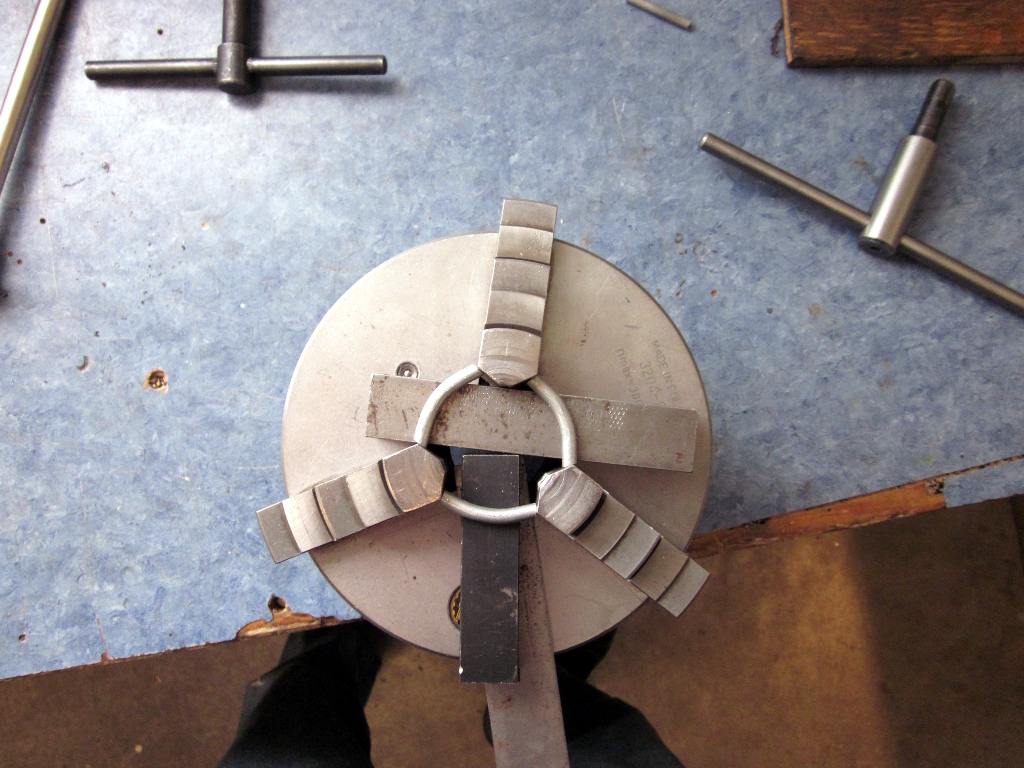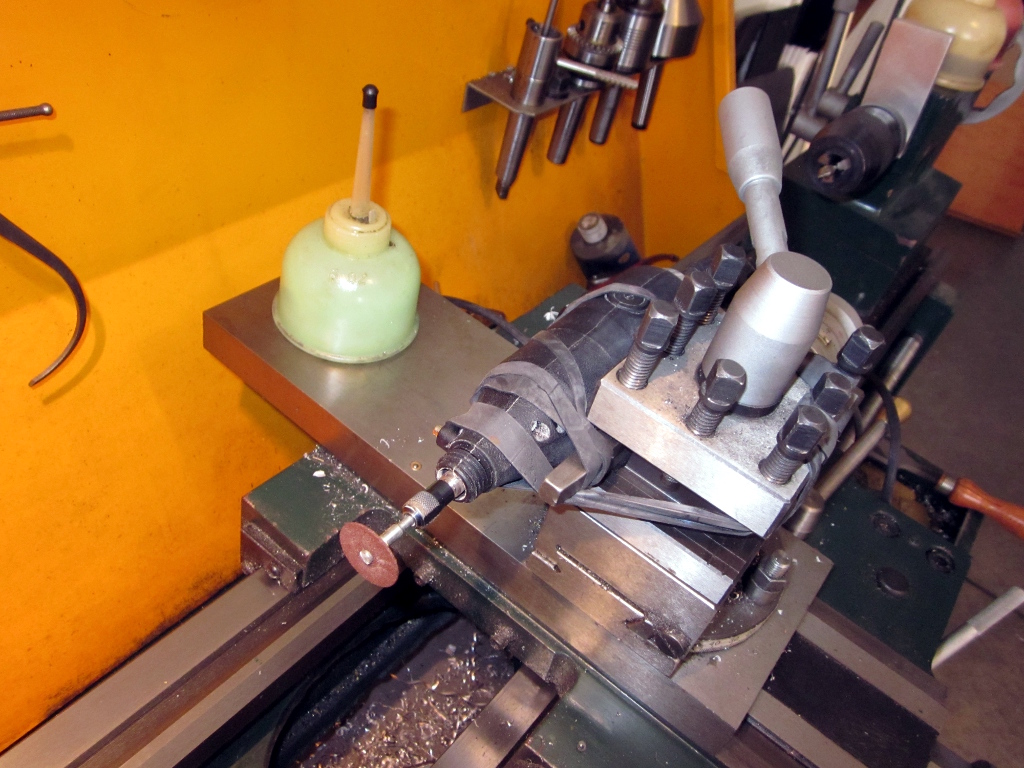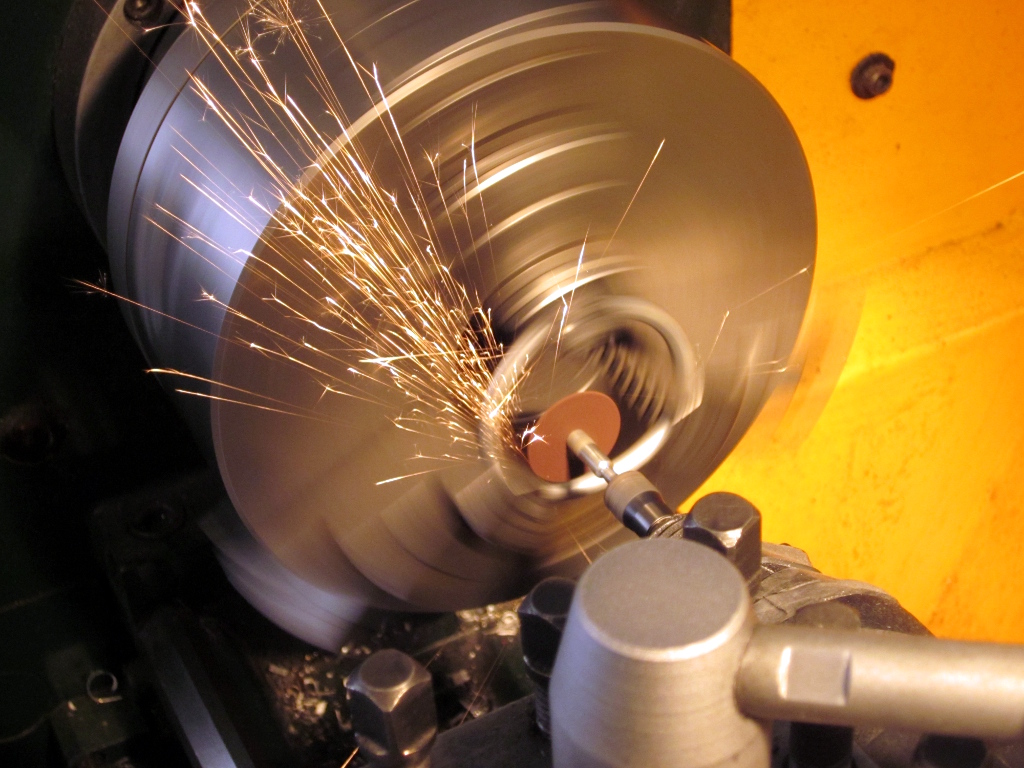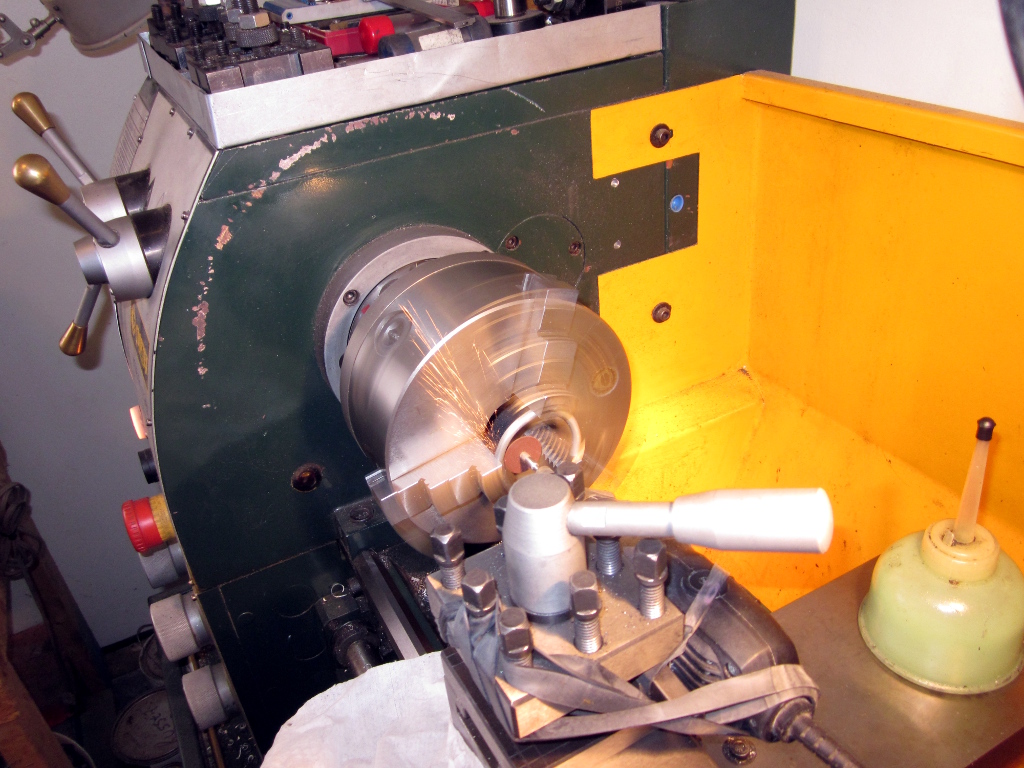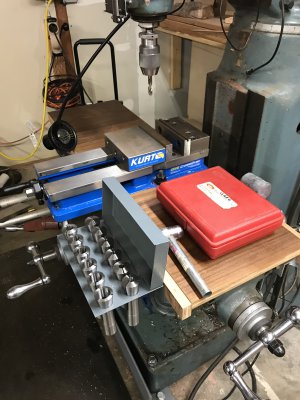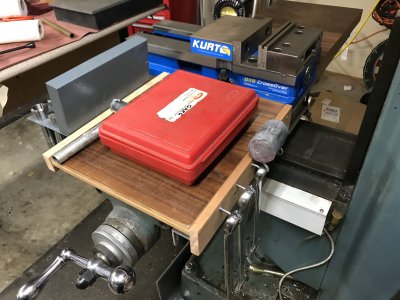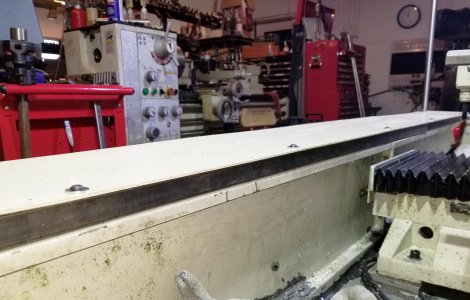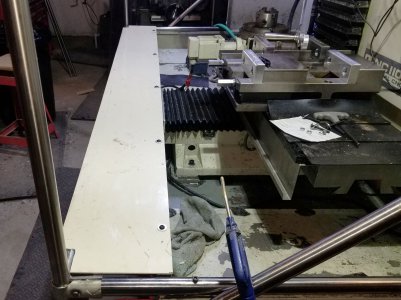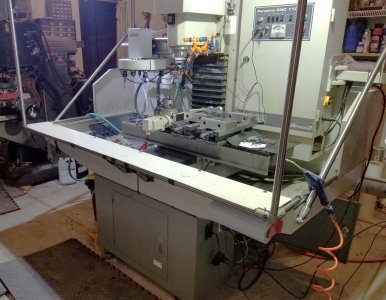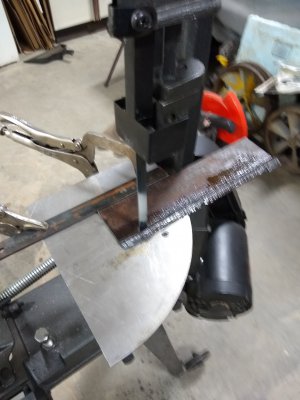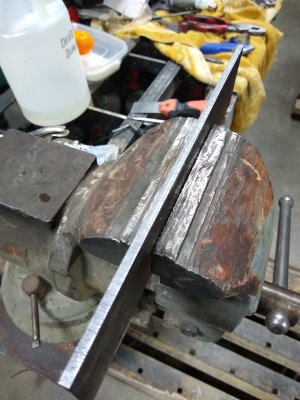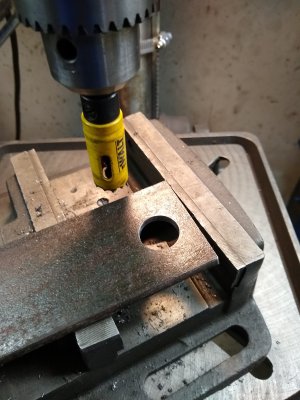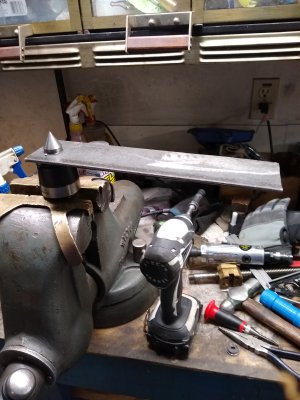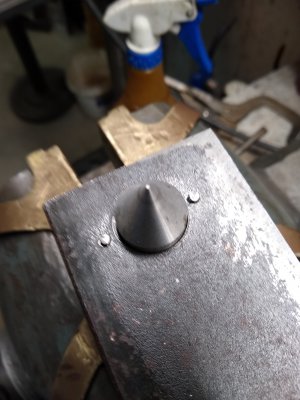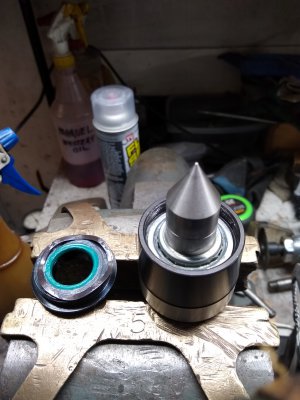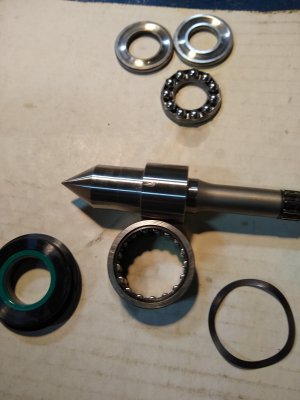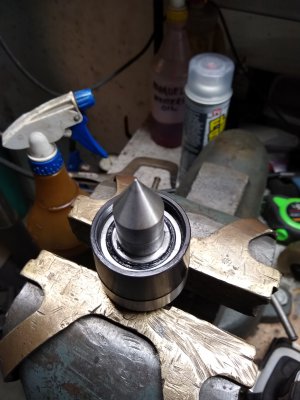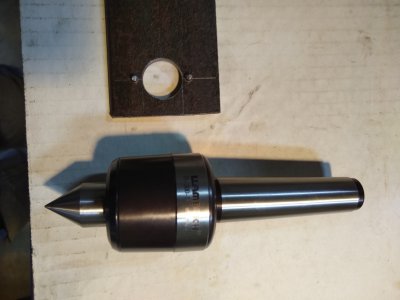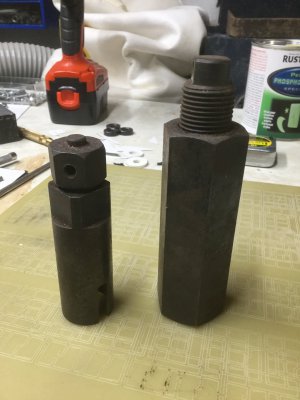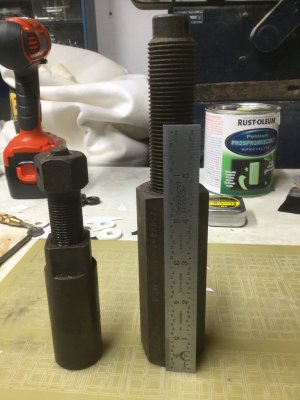POTD was finishing up the sliding/swinging doors for the Tormach. Pretty happy with the end result. The doors slide back and forth very smoothly for quick access to the mill. Pull a couple of pins, swing the doors open and the entire front of the mill is accessible.
There are brackets at the swinging edge of the doors that attach to the front tubing of the enclosure. Plan was to insert a couple of bushings for retaining pins in the doors. Made the bushings from 303 stainless.
Turned some 1" 303 down to 3/4", and a shoulder turned to 1/2"
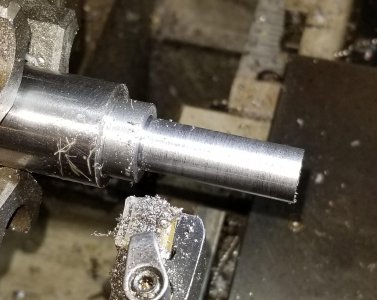
Parted on the band saw, really like my HF 7 x 12 saw
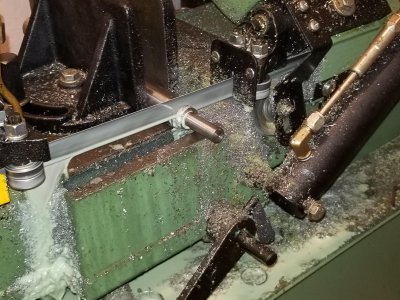
Chucked up the bushing in a collet and faced the stand off to height
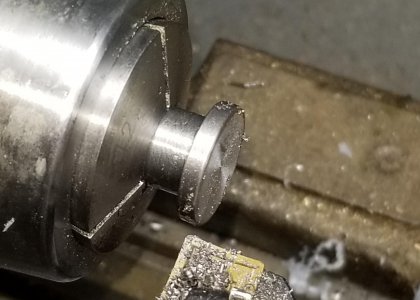
Center drilled with a 3/8" center drill, then a through hole with an F drill (0.257" for some clearance to a 1/4" pin). I went deep on the center drill to get a "free" chamfer lead in on the pin hole.
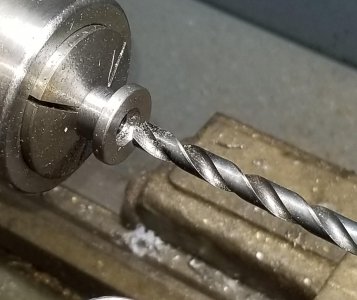
Next step was knocking the 1/2" bushing holes in the Creform brackets. Did that work on the Bridgeport.
Found center side to side with an edge finder and drilled a 1/2" hole through the Creform brackets.
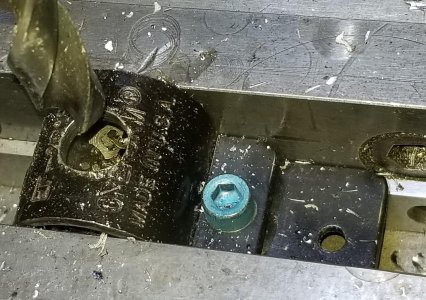
Installed the drilled brackets to the enclosure tubing and used the bushing and a 1/4" transfer punch to mark the bottom of the tubing for drilling.
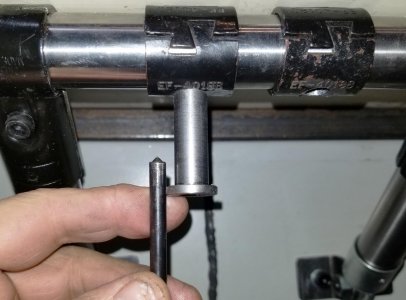
Used the bushing and transfer punch in the bracket on the top side to mark the center of the bracket hole for drilling the tubing.
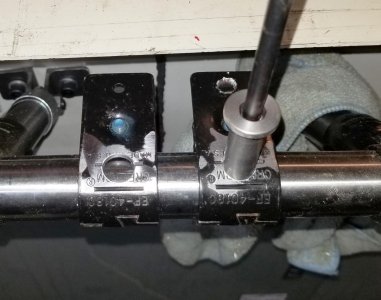
Brackets and tubing drilled out, just about ready for the bushings. Didn't shoot pictures of it, but put the bushings in the brackets and set the table top in place. Drilled up through the bushings and through the table top.
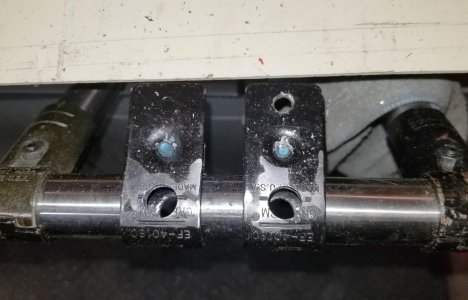
Bushings in place through the table top and bushings. Clamped a door frame in place and drilled up through the bushing and through the tubing so the holes line up.
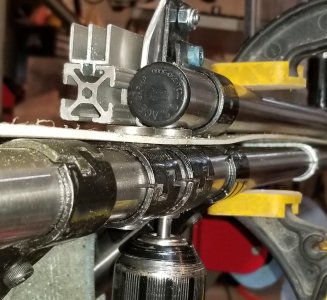
Bushings through the table top, brackets and enclosure tubing.
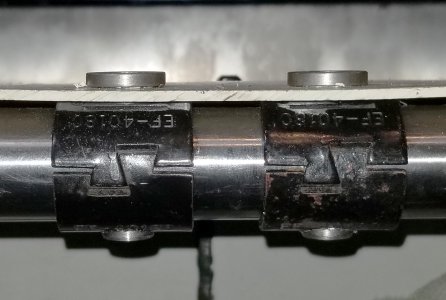
On to the retaining pins. These were made from 1/4" 303 stainless with 3/4" brass knobs.
Cutting a 1/4"-20 thread on the 1/4" 303 pin.
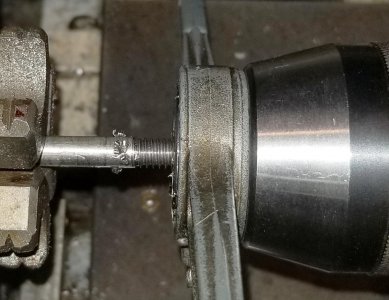
Chucked up and faced some 3/4" 360 brass.
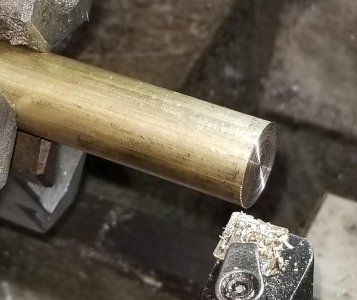
Center drill
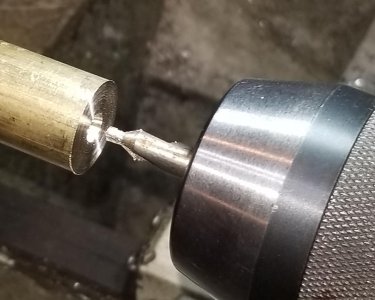
Tap drill for 1/4"-20
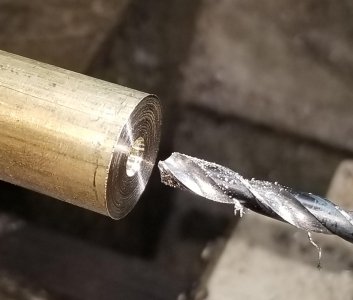
Tapping the 1/4"-20 knob hole. I really like using a piloted tap wrench on the mill, lathe and drill press. Always keeps the tap on center and square.
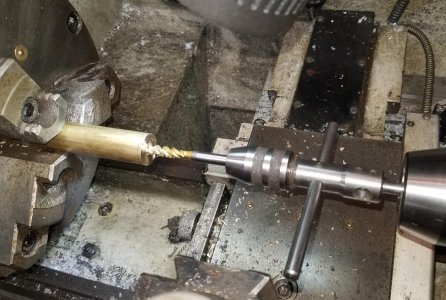
Knurled, screwed in the pin and parted
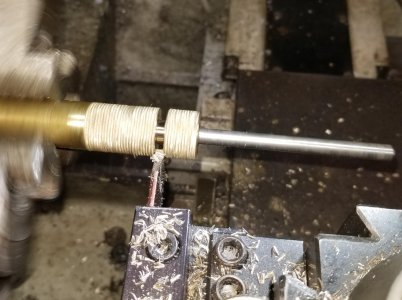
Chucked up the pin in a collet and faced the top of the knob
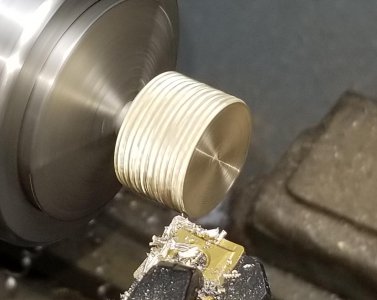
Final product. As mentioned before, pretty happy how it all came out. The sliding doors give a 3' access to the front of the mill. With a quick pull of a pin, the door swings out of the way for more access.
Thanks for looking, Bruce
Doors slid closed, pins in place.
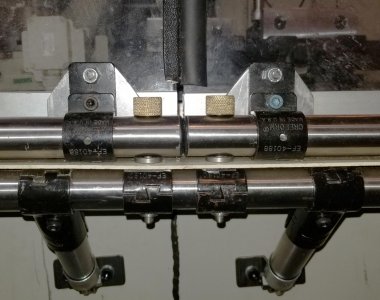
Doors slide open for quick access.
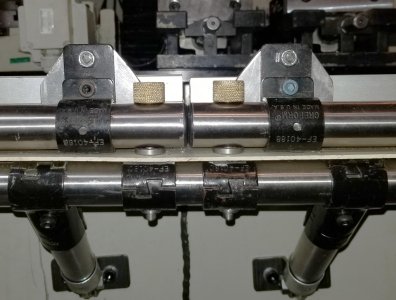
Swinging doors closed, door panels open.
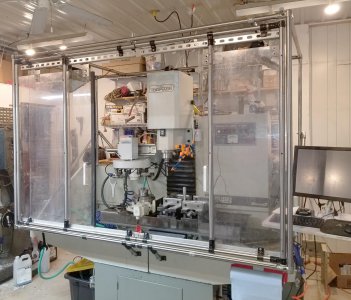
Pull the two pins and swing open the door for full access.
